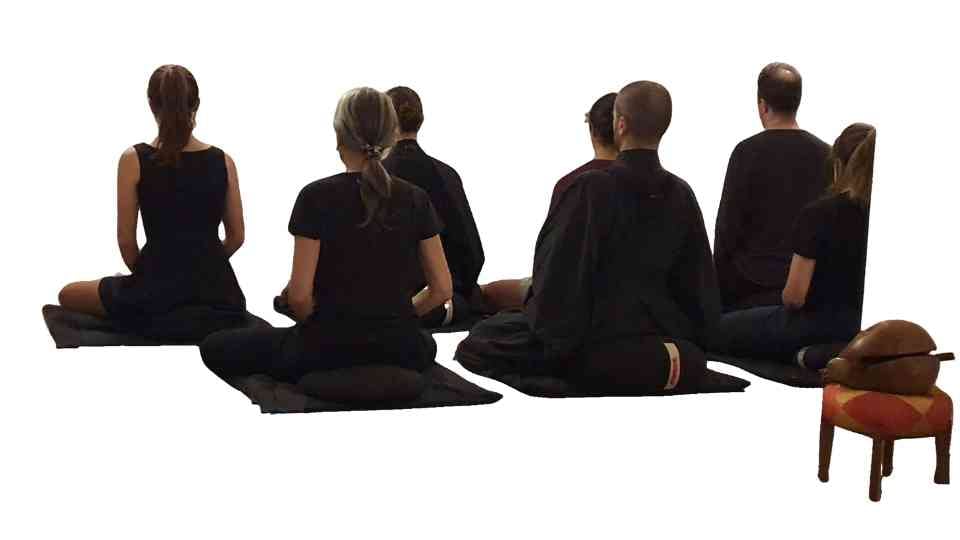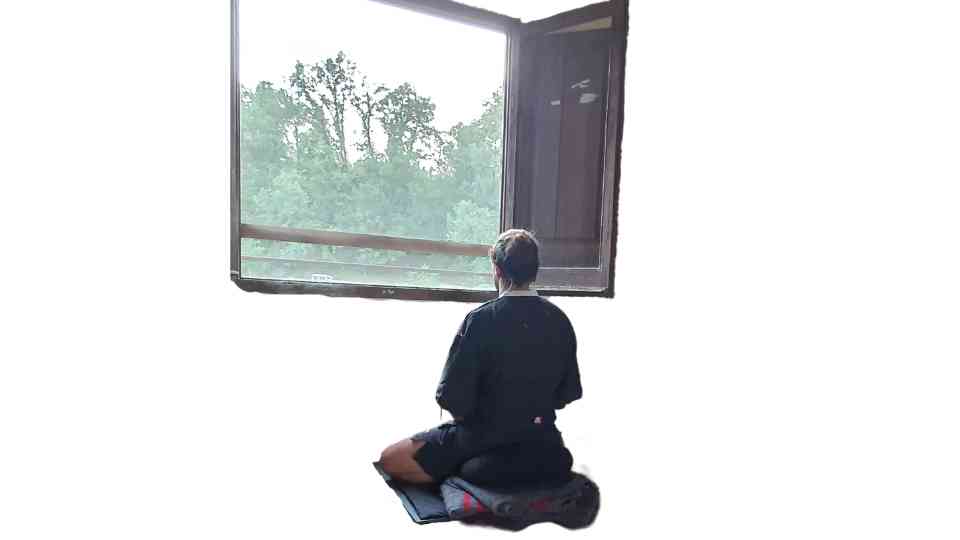In the practice of zazen, the seated meditation in Zen Buddhism, there are two main obstacles that can hinder concentration and mental serenity: kontin and sanran. According to the teachings of Taisen Deshimaru, these two mental states divert the practitioner from full awareness and the depth of zazen.
What is Kontin?
Kontin can be translated as “torpor” or “drowsiness.” It manifests when the mind becomes heavy, sleepy, or dull during meditation. This can be caused by physical fatigue, lack of energy, or excessive relaxation.
How to Overcome Kontin?
When the mind becomes heavy and sleep takes over the body, when the eyes close and attention dissolves into a dense fog, it is time to straighten the back firmly, to open the eyes a little wider and allow light to enter like a breath of clarity, to let the breath become deep, rooted in the belly, bringing new energy with each inhalation and dissipating inertia with each exhalation. It is a moment to remember that practice is like a subtle fire that must be nurtured with vigilance, without letting it fade into laziness or burn out in excessive relaxation. With patience and attention, a wakeful spirit emerges from the stillness.
What is Sanran?
Sanran can be translated as “distraction” or “restless mind.” It manifests when the mind is filled with chaotic thoughts, memories, plans, and emotions that make concentration difficult.

How to Overcome Sanran?
When the mind scatters like a wind stirring dry leaves, when thoughts pile up without order and emotions overflow like rushing rivers, it is time to focus on the breath as if diving into the steady rhythm of the waves, to allow each inhalation to sweep away distraction and each exhalation to dissolve it effortlessly, to let thoughts come and go like clouds crossing the sky without hurry, without clinging to them or rejecting them, simply observing them from deep silence, always returning to the stillness of posture, to the firmness of a body rooted in the earth, to the infinite patience that embraces and transforms everything, until the mind, like a calm pond, reflects only the clarity of the present moment.
Finding Balance in Zazen
On the Zen path, the goal is to find balance between these two extremes. A mind that is neither too drowsy (kontin) nor too scattered (sanran) becomes clear and serene. Like a deep forest (shinrin), the mind remains steady and tranquil, allowing for deep and joyful meditation.
The key lies in constant practice, patience, and observation without preference. Over time, zazen becomes a powerful tool to transform the mind and bring balance to daily life. Practice and perseverance—this is the Zen way.
References
DESHIMARU, T., 1999. La Práctica de la concentración. Barcelona: Edicomunicación. ISBN 8476729006.
Concentration and Observation in Zazen Meditation
Concentration and observation are like the right leg and the left leg with which the mind walks during zazen. A…
Dopamina i Serotonina: Efectes de la Meditació en el Cervell
Meditation, Dopamine, and Serotonin Zen meditation is an ancient practice that, in addition to being a spiritual path for introspection…
Zen Meditation and pain tolerance
Effects of Meditation on Pain Tolerance Meditation and pain have a very special relationship for Zen practitioners. On the one…
What is Meditation?
What is Meditation? Today there is a vast array of meditation offerings—there are guided meditation classes, meditation retreats, guided meditation…
Meditate more and consume less.
In a small village by the sea, there lived a man named Joan. He was a man who seemed to…
Learn to Meditate on My Own
More and more people are asking how to learn to meditate on their own because they know about the benefits…







